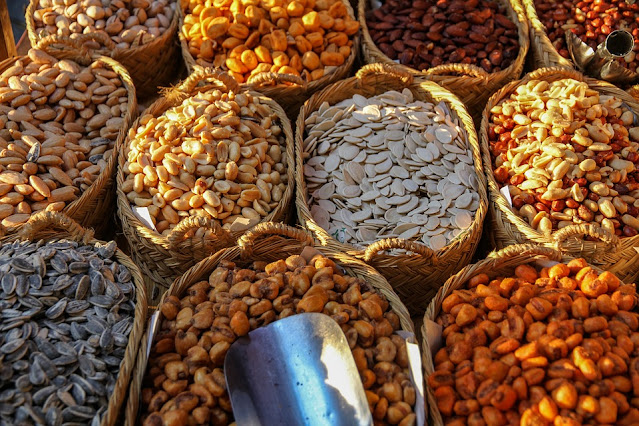Okinawa Cuisine: Unlocking the Tasty Secret to a Long, Healthy Life
When we think of Japanese cuisine, sushi, ramen, and tempura are the first things that come to mind. However, beyond the well-known flavors of Tokyo and Kyoto lies Okinawa, a subtropical island known not only for its stunning beaches but also for its unique cuisine. For an Indian audience accustomed to diverse and flavorful food, Okinawan cuisine presents an interesting mix of taste, nutrition, and longevity-enhancing ingredients.
A Blend of Cultures and Flavors
Okinawan cuisine is heavily
influenced by Chinese, Southeast Asian, and traditional Japanese culinary
practices. The region’s long history of trade with China and its integration
into Japan have given its food a distinctive identity. Unlike the heavily soy-based
dishes of mainland Japan, Okinawan food relies on fresh vegetables, lean
proteins, and medicinal herbs, making it one of the healthiest diets in the
world.
The Longevity Diet
Okinawa boasts one of the highest
life expectancies in the world, with many residents living beyond 100 years.
This longevity is often attributed to their diet, which is low in calories but
rich in nutrients. While India faces rising health issues due to processed
foods and high sugar intake, Okinawan food offers an alternative
approach—eating in moderation and focusing on nutrient-rich ingredients.
Also Read- Introduction to Japanese Cuisine
Key Ingredients in Okinawan
Cuisine
1. Sweet Potatoes (Beni Imo)
Much like how Indians enjoy
shakarkandi (sweet potatoes) in chaat or boiled form, Okinawans consume purple
sweet potatoes as a staple food. These are rich in antioxidants and complex
carbohydrates, making them a healthy alternative to white rice.
Must Read- Must Try Loaded Sweet Potato Fries
2. Goya (Bitter Melon)
Indians are no strangers to
karela (bitter gourd), and Okinawans love their version called goya. Used in
stir-fries like ‘Goya Champuru,’ this vegetable is known for its blood
sugar-regulating properties, making it ideal for diabetes management.
3. Tofu
Okinawan tofu is firmer and
richer in protein than the soft tofu found in mainland Japan. It is often
stir-fried or added to soups, much like how Indians incorporate paneer in
curries.
4. Seaweed
Seaweed, packed with iodine, vitamins, and minerals, is commonly used in Okinawan dishes. Though not a regular part of the Indian diet, seaweed is gaining popularity in urban Indian cities as a superfood.
Health Benefits for an Indian
Diet
For Indians looking for a
healthier lifestyle, Okinawan food offers valuable lessons:
Eat more vegetables and
fiber-rich foods like goya and sweet potatoes.
Opt for lean protein sources like
tofu instead of deep-fried snacks.
Use natural herbs and spices to
enhance flavors rather than relying on excessive salt or oil.
Adopt the ‘Hara Hachi Bu’ philosophy, which means eating until you are 80% full—a contrast to the heavy Indian feasts we often indulge in.
Lastly, Okinawan cuisine is more than just food; it’s a lifestyle that promotes health, longevity, and balance. While India has its own rich culinary heritage, integrating some of Okinawa’s dietary principles can help improve overall well-being. Perhaps it’s time for everyone to look beyond traditional Japanese fare and explore the secrets of Okinawa for a longer, healthier life!






Comments
Post a Comment